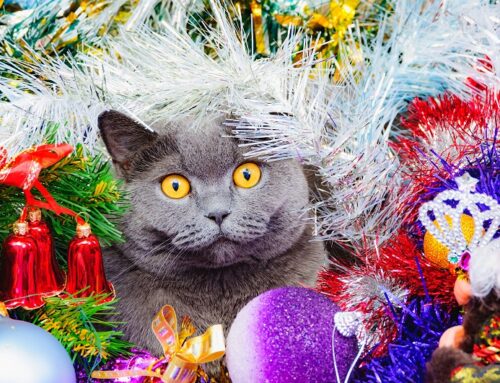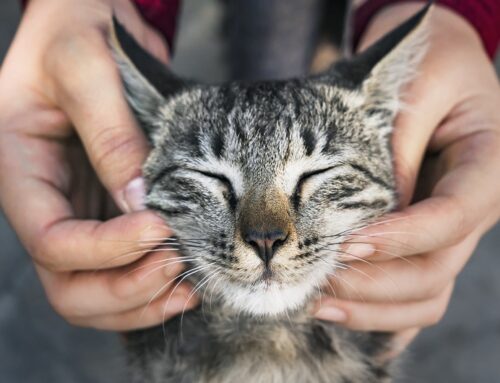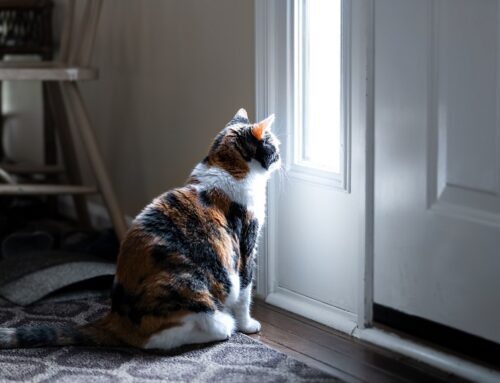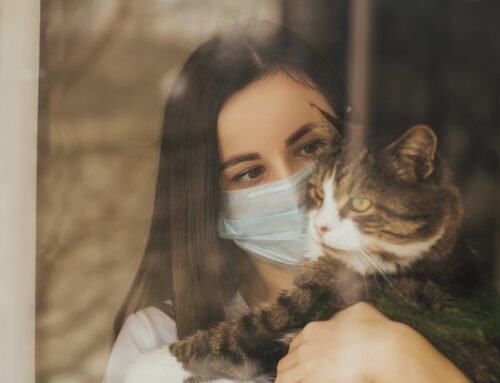Welcome to a new year, everyone! We hope everyone and everykitty is safe and well!
So far in this series, we have discussed that healthy cats will get old; and this is, of course, natural and is not a type of disease state. However, certain disease states are much more likely to occur in older cats, and the next one we will talk about is hyperthyroidism. Hyperthyroidism was a relatively unknown disease of cats before the early 1990’s. Was this because of better testing, or were more cats becoming hyperthyroid? As with many diseases, we still don’t know what triggers cats to become hyperthyroid, although there is much speculation. Current research is focused on the role of commercial diets, especially fish-based canned foods; and polybrominated diphenyl ethers (PBDEs), which are fire retardants used in furniture, carpeting, building materials, plastics, and many other things. What we do know is that hyperthyroid cats develop functional adenomas (benign tumors which continue to produce thyroid hormone) of one or both lobes of the thyroid gland. Interestingly enough, Siamese and Himalayan breeds seem to have a decreased risk of developing the disease.
So, what does the thyroid gland do? Thyroid hormones contribute to the regulation of heat production in the body; metabolism of carbohydrates, fats, and proteins; and increase sympathetic nervous system tone, with various effects on many organs. This means the “classic” hyperthyroid cat will be polyphagic (VERY hungry) and lose weight despite the increased appetite–which are also symptoms commonly associated with chronic kidney disease and diabetes. They can also have behavior changes: typically becoming more agitated and more vocal. Other symptoms can include vomiting, diarrhea, increased urination, and–in a few cats–lethargy and decreased appetite. Cats with hyperthyroidism can also have issues with hypertension (high blood pressure), kidney disease/failure, and a form of heart disease called hypertrophic cardiomyopathy which can lead to heart failure.
Hyperthyroidism is fairly easy to diagnose for most cats and is associated with an increase in the level of T4 in the blood. The problem is that T4 levels will fluctuate throughout the day with (so far) no discernible pattern, so when we draw a blood sample, we don’t know the “ideal” time to catch the elevated level in cats which may drop back into the normal range. This means some cats will require repeat or additional testing to confirm the diagnosis.
There are three main treatments for hyperthyroidism. The first (and most common) treatment is methimazole, which is usually dosed orally as a tablet or transdermally as gel applied to the hairless area of the ear. Methimazole is given for the rest of the cat’s life. The medication only controls the level of thyroid hormone; it does not directly affect the thyroid tumor itself. This means that most cats will eventually end up increasing their dose of methimazole over time. The second treatment choice is radioactive iodine therapy, which is considered the gold standard for treatment. Radioactive iodine destroys the functional thyroid tissue. Cats must remain in isolation for several days to weeks after therapy, depending on state radiation regulations. The main drawbacks are the cost of treatment and that about 10% of cats may need a second treatment. Cats with concurrent kidney disease are not good candidates for iodine treatment; therefore, all cats are started on methimazole first to decrease the T4 level and assess kidney function. In the past few years, a third treatment option has become available with variable success. It is a therapeutic diet (Hills Science Diet y/d) specially made with almost no iodine in it; this means that there should not be enough iodine available in the body to make elevated levels of T4. The biggest drawback is that it is a food, and not all cats will eat it. It must also be the ONLY thing the cat eats, as treats, table food, or any other additional food items will add iodine and negate the effects of the therapeutic diet.
With proper treatment and management, uncomplicated hyperthyroid cats can have a very good quality of life for many years. As with most other chronic diseases, the earlier it can be diagnosed, the better the prognosis. All cats 10 years and older should have annual blood testing to screen for sub-clinical disease states. As with senior humans, if any symptoms of illness develop and last more than 24 hours, they should be evaluated by a doctor. If you are unsure if something is a problem, then it is a good idea to call anyway. Even a relatively minor problem can become catastrophic if left untreated for too long. Working together, we can help keep your feline friend happy and healthy for many years! Give us a call at 406-728-0022 if you have any questions!
=^_^=








